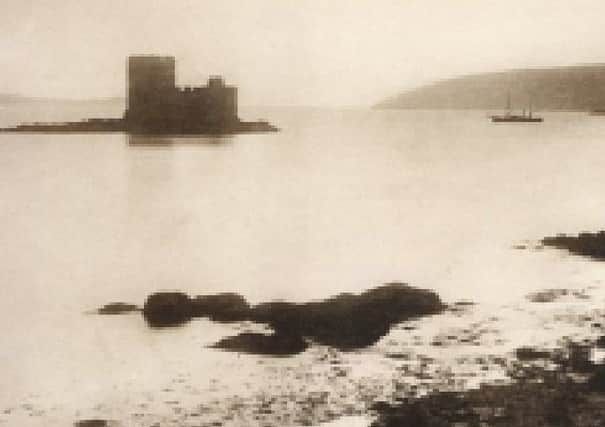The family used guns to fend off officials


This information comes from the Dog Tax Records which can be accessed for free on ScotlandsPlaces. ScotlandsPlaces is a website that gives you online access to records from three national archives: the National Records of Scotland, the National Library of Scotland and Historic Environment Scotland. All of the records are linked by a common theme – they tell us something about Scotland’s places. Of course, in telling us about Scotland’s places we also learn about Scotland’s people.
For example, in learning about the island of Barra, it is possible to learn about the people there too. For many years the MacNeils’ main stronghold was Kiessimule, or Kisimul, Castle. Today it is the best-preserved castle in the Western Isles. It is on a tiny island in Castle Bay and can only be reached by boat. The structure is very similar to Breachacha on the Isle of Coll and it has been suggested the two were built by the same master mason. It seems that the tax agent was lucky to get his ten shillings for Roderick’s dogs, as in 1675 the family used ‘hagbutts, guns and pistols’ to fend off government officials.
Advertisement
Hide AdAdvertisement
Hide AdAfter Kiessimule was abandoned it proved a useful source of stone for the locals who used it as ballast during the herring fishing boom. The Ordnance Survey Name Books (records of place names compiled in the 19th century) attest to the importance of fishing in the area, describing Castle Bay as “the chief resort of fish curers when prosecuting the herring fishing in spring”.
They also give Ardnamona, to the east, as a point where huts were built for the purposes of herring fishing.
It’s not clear whether these huts were living quarters, places of work or used for both during the fishing season. However, another record, the Medical Officer of Health Reports, give an insight into what homes were like in the Western Isles:
“The house is divided into three compartments, with only one door of entrance. The first compartment is used for housing the cattle, and the manure and liquid filth are allowed to accumulate for twelve months before the place is cleaned out. Immediately adjoining is the second compartment or kitchen, usually divided by a rudely constructed wooden partition from the cattle – in some instances there is no partition at all; the third or innermost compartment is the bed-room, containing two, four, or five beds. In this bedroom every member of the family sleeps, irrespective of age or sex, and it is often used for storing potatoes, straw, corn, and all sorts of rubbish. The houses are seldom or never cleaned.”
Advertisement
Hide AdAdvertisement
Hide AdThis record also shows that Barra had a population of 2,365 in 1891. This shows the change on the island since that time; today its population is much less, the 2011 census giving a figure of 1,264.
If you’re interested in the history of the Scotland and the Western Isles, why not take part in the project?
You can sign-up to be a transcriber on ScotlandsPlaces and help make our records even more accessible. Along the way you learn new skills, find out more about Scotland and become part of an online community of volunteers.
• Thanks to Kim Beasley, ScotlandsPlaces project officer, for this article.
Advertisement
Hide AdAdvertisement
Hide AdThis article features in the latest issue of our sister title Back in the Day (on sale now).
If you would like to submit material to Back in the Day please get in touch with our team at: [email protected]